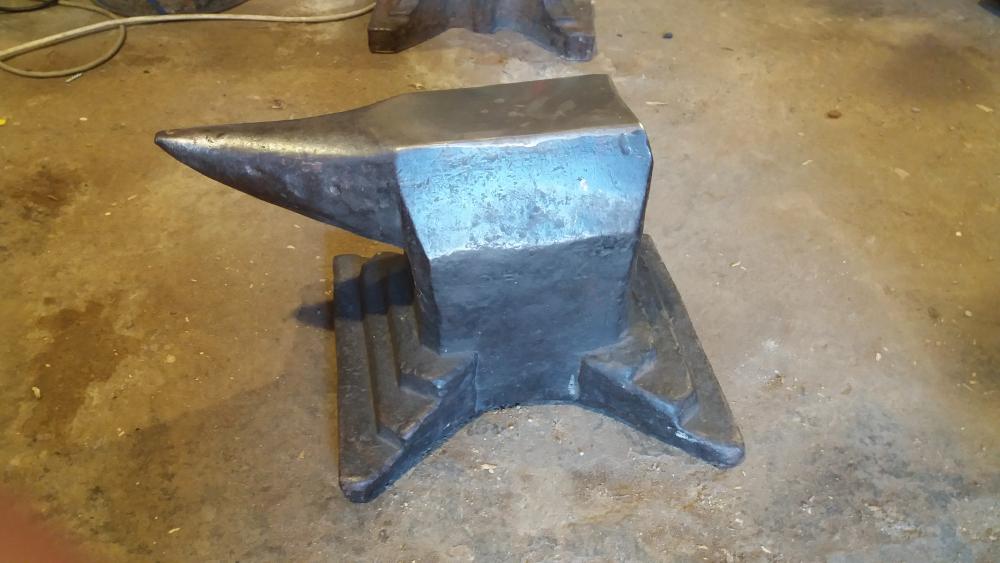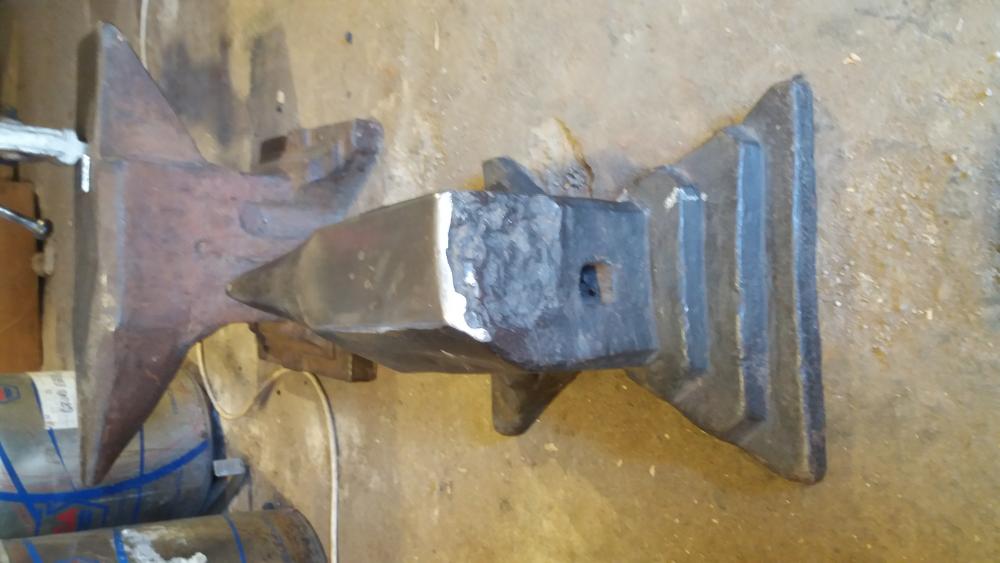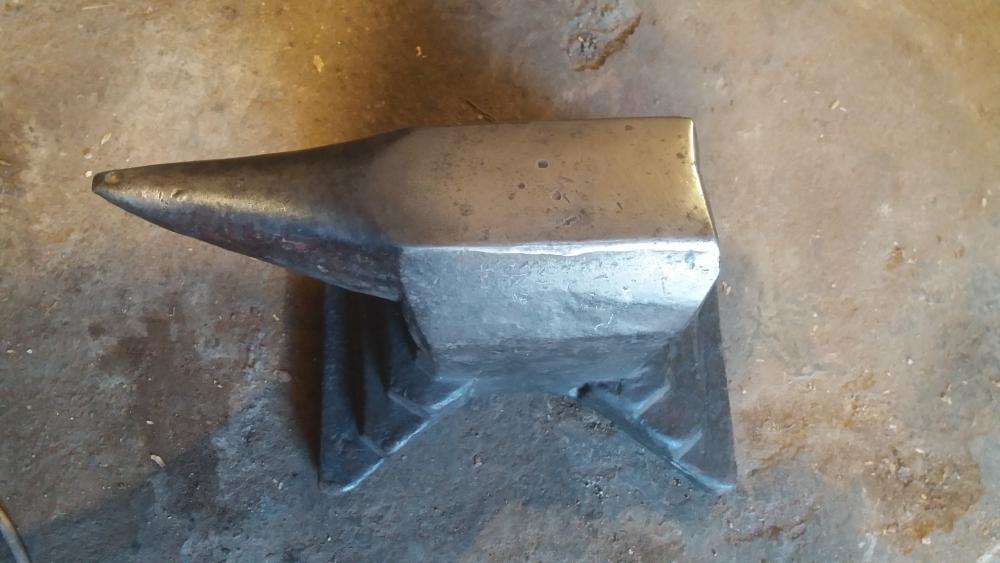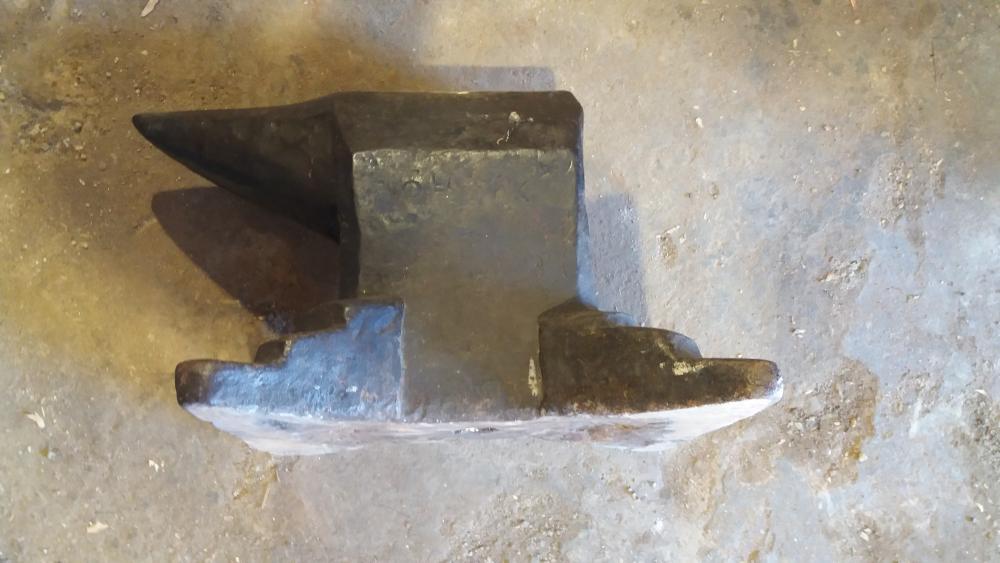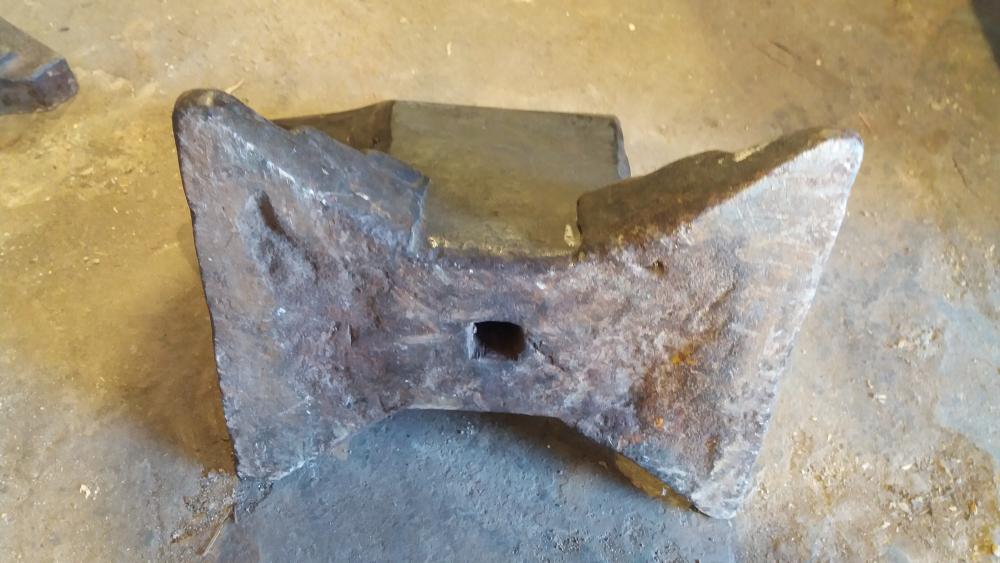
matei campan
Members-
Posts
405 -
Joined
-
Last visited
Content Type
Profiles
Forums
Articles
Gallery
Downloads
Events
Everything posted by matei campan
-
take care - the rust on the face affects the rebound test, you may "read" less rebound. maybe some sandpaper or a wirebrush to remove a bit the rust is a good ideea
-
I'm not even convinced that there's a chip there, seems rather a discoloration
-
S&H anvil with 'Eselsrücken'
matei campan replied to Tungsten's topic in Anvils, Swage Blocks, and Mandrels
It seems the french had the most numerous patterns. that catalog is from just one manufaturer. once I almost bought a very similar anvil (same pattern) but of french origin @ ~300kg for 80euros, condition as new, just some rust on it... -
S&H anvil with 'Eselsrücken'
matei campan replied to Tungsten's topic in Anvils, Swage Blocks, and Mandrels
you know, germans and french have met during the history - here's the result from one encounter. I think that that anvil has the best from each nation tradition. wow, that's one of the most gorgeous anvils I have seen! that's an anvil made probably for the french or belgian market? the anvil manufacturers seemed that they were making not only their "national" patterns, but also patterns for specific areas, traditions. I also saw at least once a french pattern made in Sweden. -
really ugly anvil with bad repairs
matei campan replied to the iron dwarf's topic in Anvils, Swage Blocks, and Mandrels
as I know, the beveled or the rounded far side "reinforces" the edge where all the heavy hammering is done, for example when pointing bars, etc. it's less likely to chip or mushroom. I don't remember if I've ever seen chipped edges on that area on that kind of anvils. -
Is that chain to quiet the anvil or just to haul it? If you bolt/strap the anvil to the base tightly, that will kill the ring better and your hammering will be more effective.
- 7 replies
-
- anvil
- railroad ties
-
(and 1 more)
Tagged with:
-
really ugly anvil with bad repairs
matei campan replied to the iron dwarf's topic in Anvils, Swage Blocks, and Mandrels
-
really ugly anvil with bad repairs
matei campan replied to the iron dwarf's topic in Anvils, Swage Blocks, and Mandrels
In my lost reply to you on PM I also said that it seems a forged anvil to me, I have a very similar one with the heel broken at the weld. also you can actually see the welds of the feet and the fact that they are not equal to each other and not really symmetric , as yours. there are no visible markings apart of the weight, as I can remember. I'll post some pictures later. -
what a beautiful anvil! I have two French anvils on which you can actually see the pieces of steel of which the faces are made. one it seems like been made of little bricks (something like 2.5/1cm), the other one is made from 5 bars welded parallel to the length of the anvil. the horns have thinner steel welded on.
-
Anvil Identification (No markings)
matei campan replied to clenceo's topic in Anvils, Swage Blocks, and Mandrels
If that anvil has already seen use, that could tell us that's a good anvil as it's in perfect shape as I could see it in the pics. -
that cut in half anvil it doesn't seem to be a Peddinghaus, that's a cast anvil and it resembles a Peddinghaus as much as a horse resembles to a donkey. the Peddinghaus are drop forged anvils.
-
Which one to keep?
matei campan replied to No.4shot's topic in TPAAAT - Applied Anvil Acquisition Technique
If I were in your place I'll keep both until I could swap the HB to a double horned Peddinghaus or another double horned anvil. if you have one anvil, you can work everything on it, if you have two (different patterns, sizes) and work on them, you ask yourself how you was able to work on just one anvil. and that's true with the double horned anvils - once you get one, you cannot imagine the life without it, especially for ornamental work, but not only for that. if you get a double horned one, you'll find yourself working mostly on that rather than on a London pattern one. -
I'm glad that you guys love it. first, the specs were given by the client. he wanted a spike and that kind of pry-bar end of the handle. when I was testing it I felt nervous not about that pry-bar/chisel end, but by the spike. it was travelling to close to my face for my taste. me, too, I'd prefer a hammer end instead of a spike. yes, the handle is burlap "micarta", and the black patina is from the forge. I did 99% of the shaping before HT, so just the bevels were finished after. unfortunately I started to take pictures during the forging after the first and most important steps were already made, but here are some other pics:
-
hello, here's a hawk made by the specs given by the customer. he provided dimensions (aprox.) and a sketch. but it took me some inspiration and thinking to come up with the final design. in fact, the design developed step by step as I was working on the hawk. I started from a rectangular piece of approximately 20/8/1.2cm leaf spring steel. it was a lot of work, as usual much more than I imagined.
-
That's rather a German anvil.
-
thank you guys! now I have yo learn the machine... and the craft.
-
hello I got an ESAB Origo Mig c250 3ph (http://www.esab.com/gb/en/support/upload/Origo-Mig-C170-3ph-C200-3ph-C250-3ph.pdf). by looking at the specs in the user manual could you tell me about it's capabilities? is it just for light fabrication use or I can use it for welding the heavy pieces of an DIY power hammer (18cm diameter anvil to 5cm thick baseplate, for example), as it's an upcoming project?
-
what's the width of the face? that narrow pattern double horn looks very interesting. If I would ever make an anvil, I would make something somehow similar. it would be also easier to make than other patterns
- 26 replies
-
- anvil
- restoration
-
(and 2 more)
Tagged with:
-
a southern German pattern double horn would be my favourite. if you ever start working on a double horn anvil, it would be very hard to go back on a London pattern (which is a good complement, though), the opposite move is very easy. there are some French anvils with very interesting features, especially in the transition from the round horn to the face.
-
the most difficult to find was the first one, then the second one, after that, they started to breed...
-
take care, thick rust and paint on the face could fake the rebound test. when I bought my little Trenton I tested it with the steel ball and the ball was barely bouncing off the face, but the face was painted and I knew that this heavily affects the rebound and I was pretty confident that the anvil was good. after removing the paint and the rust bellow the paint, I have 80%+ rebound. there is another test that I was using for anvils which I haven't seen it advised around too often - the file test - you take a file and try filing the edges, it has to skate rather than bite into. the hardness may differ from anvil to anvil and the range could be quiet wide, from the low 50'sHRC to well over 60HRC, but still in the good/excellent anvil category, so it takes a bit of experience to evaluate the hardness this way, but still a good and relevant test. it only doesn't tell you if you have a delaminated face or a crack which could be detected with a hammer or a steel ball. I used the file test when buying that Trenton, just to check if I was right about the hardness - the file was skating like on glass.
-
I'm so glad I was right. now you have a very nice and good anvil. my guess it's spanish - yunque is the spanish word for anvil, so the root YUN from the yunque is found in the anvil's name YUNtade. anyway, "yuntade" sounds so spanish. as for the pattern it's more close to the northern french pattern, except for the hardy hole placement. the proportions are closer to the french than to the german pattern, which is narrower (width/length ratio). and also, is a question of "flavour", it doesn't have a "german flavour" at all. so, I saw it right, there is a serial number stamped in. the ground area at right I thing is not a missing plate (you already have a serial number) or something, but an excess of material from the casting process which was cut off. did you test the edges with a file, I'm so curious? only thing I would do it would be to dress the edges a bit. and more important to bolt that anvil firmly. put a pair of thick flat iron or angle Iron over the feet and secure it with some long wooden screws to the stump (or whatever stand will be?). that will cut the noise significantly (as a full cast steel anvil it's very noisy I guess) and maximise performance (it won't jump around and eat up energy by bouncing). just checked "yunque yuntade" on google: https://www.google.ro/search?q=yunque+yuntade&client=ubuntu&hs=iEp&channel=fs&source=lnms&tbm=isch&sa=X&ved=0ahUKEwjV8c3-mMfLAhWJQpoKHQN8C7UQ_AUIBygB&biw=1301&bih=678#imgrc=N5milHK3CVHv6M%3A and https://www.google.ro/search?q=yunque+yuntade&client=ubuntu&hs=iEp&channel=fs&source=lnms&tbm=isch&sa=X&ved=0ahUKEwjV8c3-mMfLAhWJQpoKHQN8C7UQ_AUIBygB&biw=1301&bih=678#imgrc=UzyUypF4PlFp3M%3A so, mistery solved - spanish anvil
-
yes, that's a torch cut, but I'm talking about the long clean chip towards the end, at right, if it's not just paint, or an illusion. I have such a clean, long chip on the heel of a small Trenton anvil. in Europe there are many good cast steel anvils, it might be one of them.
-
now, looking more attentively to the pic, at the right side of the edge, I see a chip that seems it broke down like glass - this tells me the face is very hard, the cast iron doesn't break like that, as far as I know.
